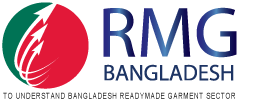Textile machinery companies are developing advanced technologies to improve efficiency, reduce resource consumption, and lower production costs, but company representatives say the high initial costs remain a significant barrier for many manufacturers.
While such developments are time-consuming and initially cost-intensive, their payback period is shorter compared to other technologies, the representatives told The Business Standard on the second day of the 19th Dhaka International Textile and Garment Machinery Exhibition (DTG-2025) at the International Convention City Bashundhara (ICCB) in the capital on Friday (21 February).
The 19th edition of the DTG Expo is currently underway, running from 20 to 23 February 2025.
The exhibition features textile machinery, fabrics, filaments, chemicals, dyeing technology, and accessories. Seminars on sustainable production and modern technology are also being organised.
Considering the overall benefits, textile manufacturers are now seeking the latest technologies to remain competitive in the global market.
Jamel Ahmed, general manager of Leone International, the sole agent of ACME Machinery Industry, said the Taiwanese company’s latest dyeing machine significantly reduces water consumption in the textile industry.
“Previously, dyeing 1 kg of knitted fabric required around 200 litres of water, but new technology cuts this to 80-100 litres. ACME’s advanced machine reduces it further to just 20-25 litres,” he said.
First introduced at Fariha Knit in 2019, the technology has been adopted by DBL Group as well. Despite being 1.5 times costlier than conventional models, it offers a shorter payback period of 1.5 years due to cost savings, compared to over three years for other machines.
Global adoption, local challenges
While some factory owners were quick to embrace the innovation, others hesitated due to high upfront costs. However, as stricter groundwater usage regulations take effect, the technology may become essential.
Jamel Ahmed noted that countries like Italy, Germany, and Spain, which already have such restrictions, are using this machine. Major activewear brands such as Nike and Adidas prefer it for its dyeing precision and ability to maintain fabric quality.
However, many Bangladeshi entrepreneurs, who typically start with low initial investments, find it difficult to afford.
CL Chang, managing director of Leone International and co-designer of the round-shaped dyeing machine, highlighted its efficiency, stating that it reduces water, steam, electricity, and chemical usage by 65%, along with CO₂ emissions.
Introduced for commercial production seven years ago after over 20 years of research, the Intelligent Conveyor Drive Dyeing Machine is designed for energy saving and environmental protection.
“With rising energy costs, water shortages, and pollution, this machine offers a sustainable solution for all fabric types,” he said.
The technology holds over 200 patents worldwide, including in the EU, USA, UK, and several Asian countries, and has won the Distinguished Enterprise Innovation Award and Taiwan Excellence Award.
Meanwhile, Mazim Corporation, a machinery indenting company with 40 years of experience, has recently introduced its own technology under the brand name Sirox.
“Mazim Corporation’s new technology, Sirox, functions as a pre-dryer in stenter machines, compactors, and relax dryers, helping remove excess moisture while boosting efficiency and reducing energy consumption,” said CEO of the company Ziaul Hassan Christy.
“Our machine increases stenter production by at least 25% without requiring extra space for mounting,” he added.
Unveiled at the expo for the first time, Sirox has received a positive response as a locally branded alternative to imported machines. Manufactured in Ahmedabad at Samirika Fabrication, it was developed as a Bangladeshi brand rather than an Indian one, the company CEO Ziaul Hassan noted.
Automation in Bangladesh’s yarn factories
HiCrop Machinery’s Director of Foreign Marketing, Yuli Ping, said their new technology-driven machines require fewer workers and significantly reduce waste, as Bangladesh’s yarn factories shift to automation.
“Our focus is on providing technological solutions rather than direct sales,” he said, adding that buyers will reach out after the fair.
Md Nirab, a marketing officer at a Chinese company, highlighted their automated knitting machines, where one operator can now manage ten machines instead of one.
Several companies at the exhibition showcased advanced machines replacing traditional handlooms.
Opportunities in Bangladesh’s fibre market
Asia Pacific Rayon (APR), one of Asia’s largest viscose-rayon producers, is also participating.
Its Vice President, Tapan Sannigrahi, said Bangladesh’s man-made fibre market is growing, with APR selling over five tonnes last year. He sees strong potential in the country’s fibre-based garment sector.
At this year’s expo, more than 1,100 leading brands from 33 countries are participating, showcasing their technologies across 1,600 stalls. Companies from China, Germany, India, Italy, Japan, South Korea, and Turkey are presenting their latest textile technology and equipment.
















